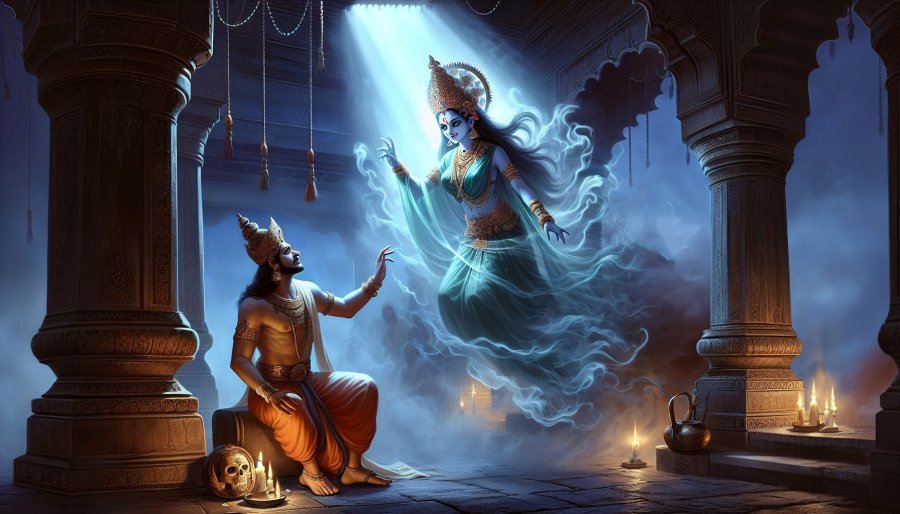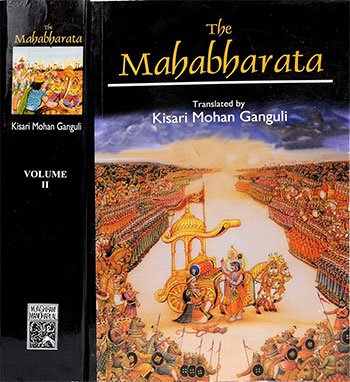Section XVIII [summary]
Book index: Mahabharata (English)
This page contains a summary of the Mahabharata Section XVIII including examples of moral lessons in daily life. The Maha-Bharata is one of the largest epics ever written containing roughly 100,000 Sanskrit verses. It deals with the legendary history of ancient India and contains a large number of interwoven tales.

Short summary of the chapter:
The story revolves around a king who finds a female Rakshasa in his house, who reveals herself as Grihadevi, the household goddess. The Rakshasa informs the king that she has united the scattered body parts of his deceased son, creating a living child for him, as a result of the worship she receives in his house. The king, overwhelmed with gratitude, accepts the child and names him Jarasandha, meaning "united by Jara". The child grows rapidly, bringing joy to his parents and becoming a symbol of the blessings received through devotion and worship.
Full English translation:
This page is merely a summary which is automatically generated. If you are looking for authentic sources such as the Sanskrit text or the Full English translation of Mahabharata Section XVIII, have a look at the following articles:
Section XVIII, online text
English translation by Kisari Mohan Ganguli.
Read this and other chapters online.
Mahabharata (English Summary)
by Kisari Mohan Ganguli | ISBN-10: 8121505933
Buy the latest edition:
FAQ of Section XVIII:
What is the significance of the Rakshasa woman Jara in the story?
In the story, Jara plays a pivotal role by uniting the king's son from fragmented bodies, symbolizing restoration and renewal. She also blesses the household with prosperity.
How did Jarasandha get his name according to the tale?
Jarasandha was named after the Rakshasa woman Jara who united his fragmented body parts. The king bestowed this name upon him as a token of gratitude.
What impact did Jara have on the king's family in the story?
Jara's actions brought joy and prosperity to the king's family. By uniting the child, she symbolized renewal and blessings, enhancing the happiness of the parents.
Mahabharata Section XVIII in daily life:
In the story, a Rakshasa woman named Jara, who is also known as Grihadevi, the household goddess, rewards a king's family for their religious devotion and for worshipping her image in their home. She accidentally creates a living child from the body fragments of the king’s son, attributing this miracle to the king's fortune and her satisfaction with the worship she received. Taking inspiration from this story, one could focus on the importance of maintaining faith and showing devotion in one’s daily life. This doesn’t necessarily mean one has to follow religious practices strictly but suggests that showing gratitude and respect towards various aspects of life and maintaining a positive household environment can lead to unexpected blessings and good fortunes.
Moreover, the act of portraying Grihadevi surrounded by children as a symbol of fertility and protection in one's home highlights the power of symbols and the belief in their potential to bring prosperity. Implementing this in daily life could mean embracing symbols or practices that promote positivity and protection in one's living environment. Celebrating achievements and good fortune, much like the king who organized a festival in honor of Jara, can reinforce the value of gratitude and community spirit in everyday life. This story underscores that kindness, reverence, and maintaining a positive environment within one's household can lead to beneficial outcomes, sometimes in unexpected ways.
